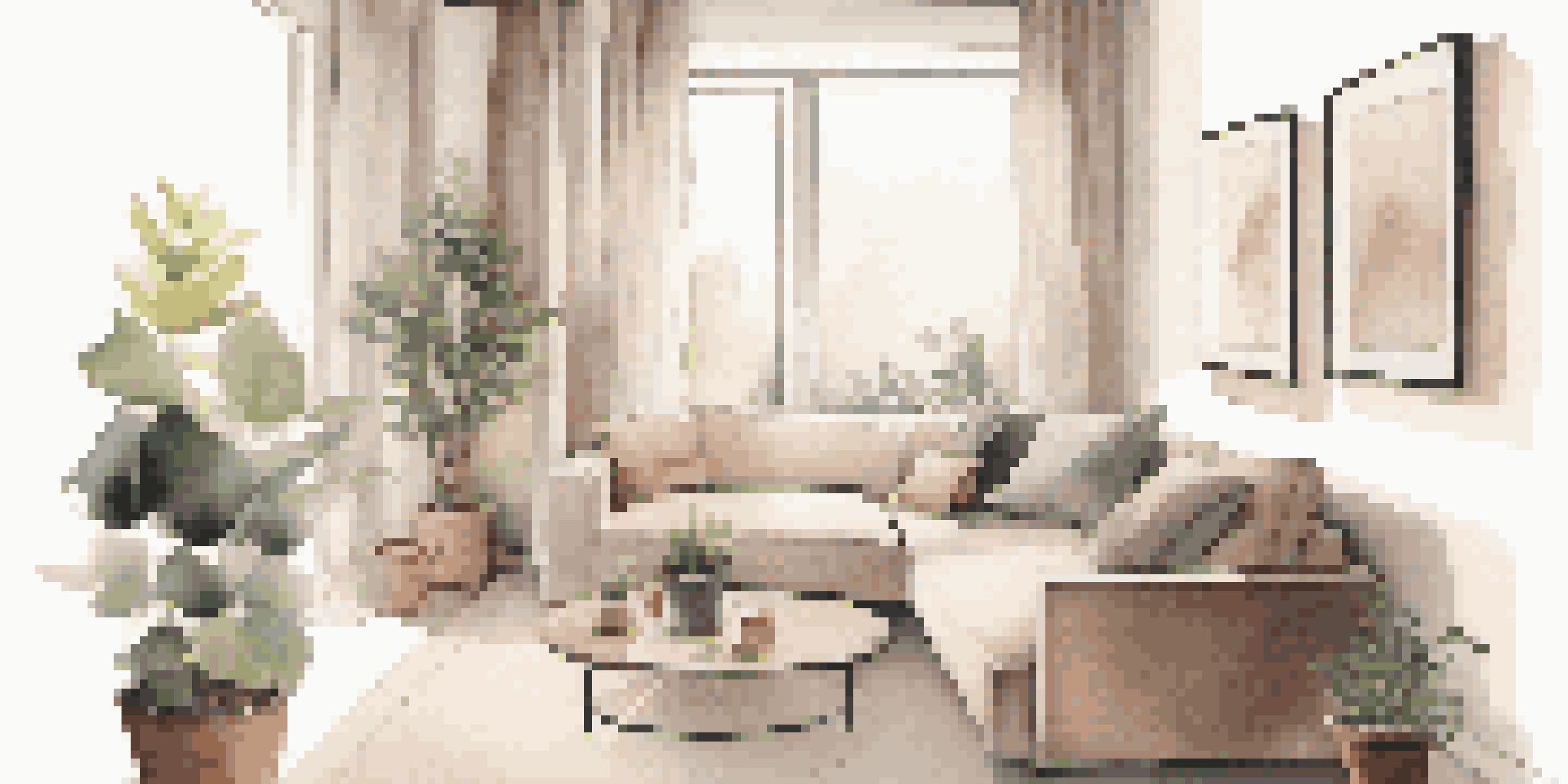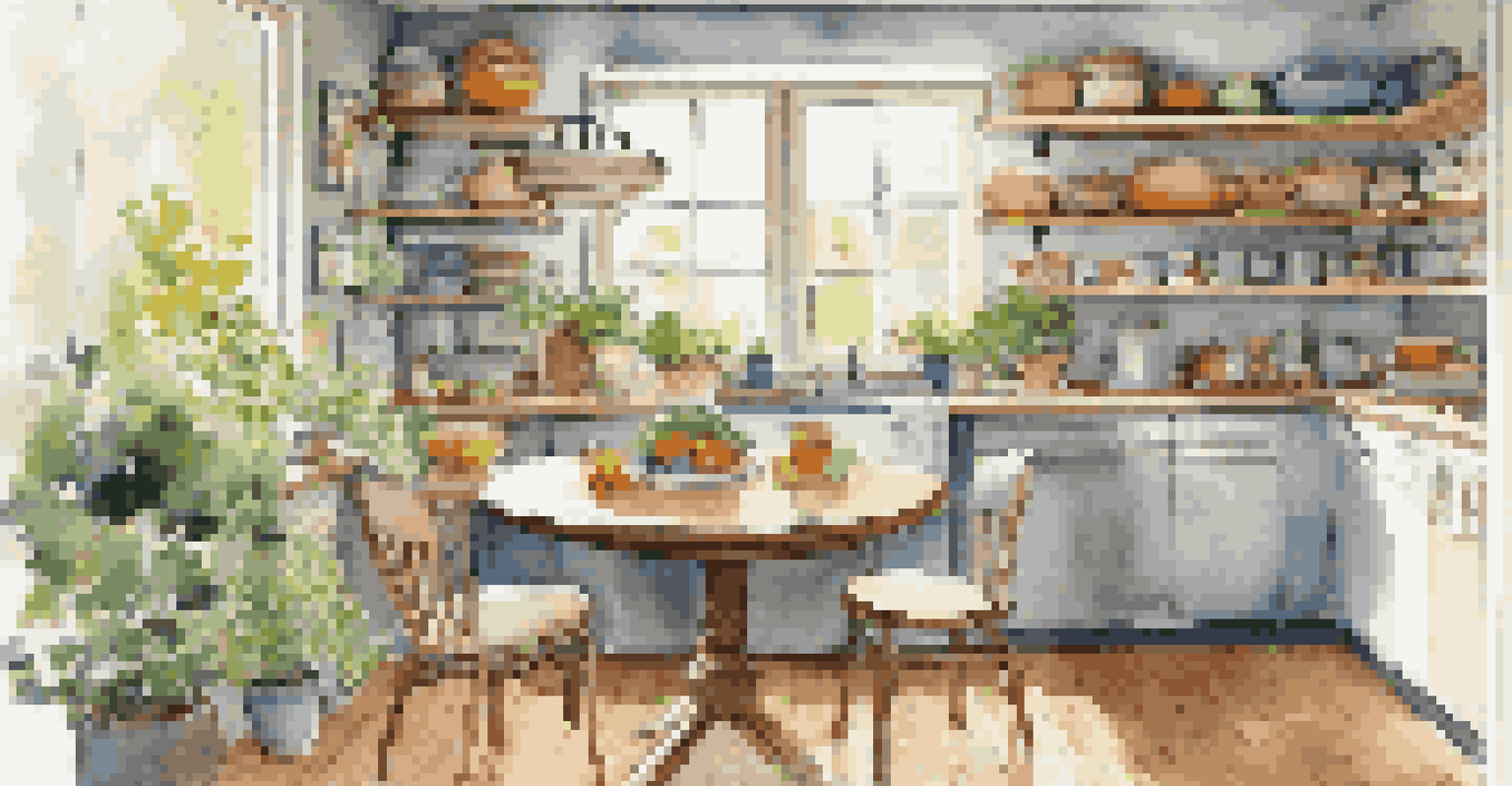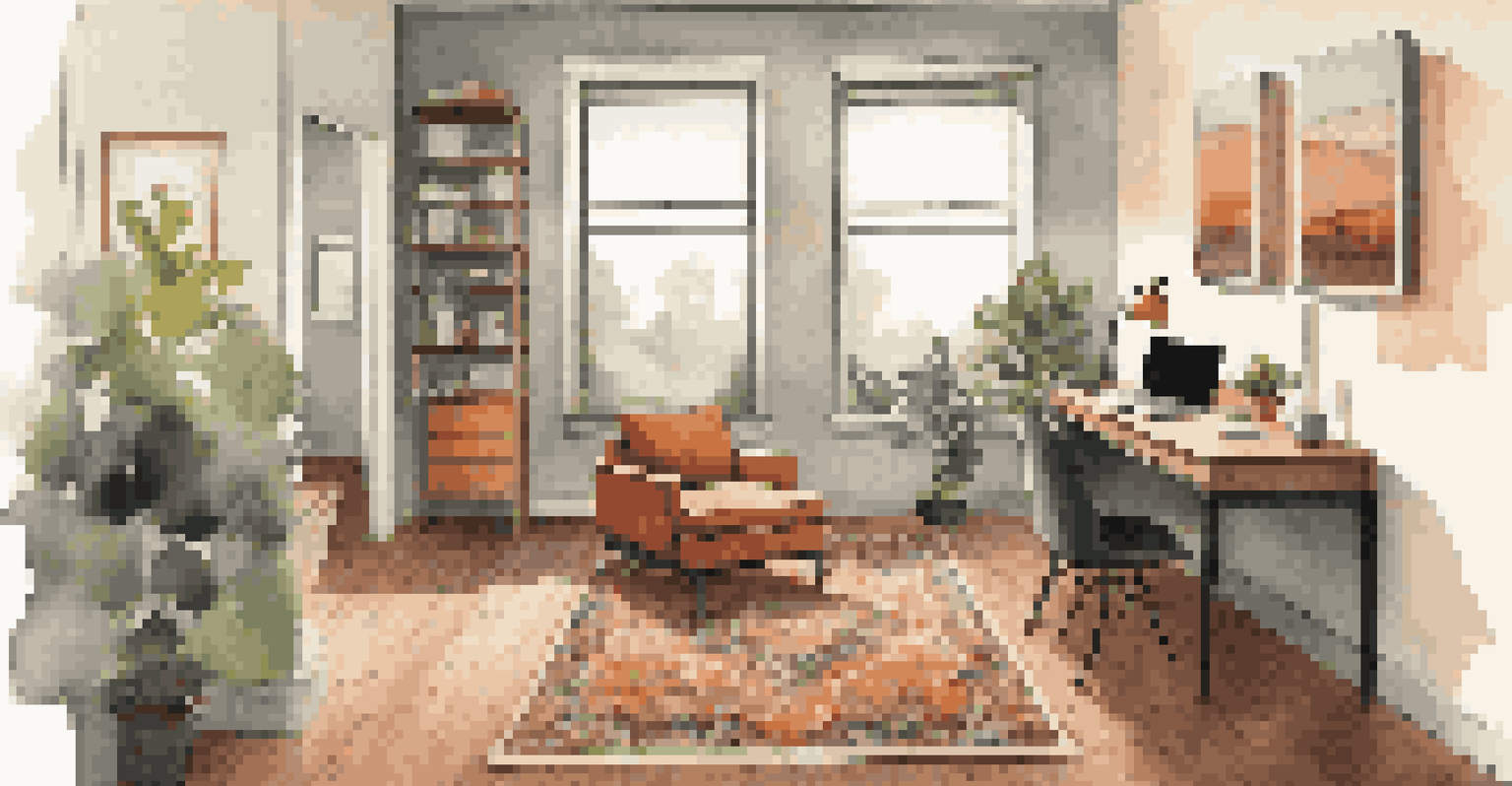Using Smart Planning to Optimize Space in Small Homes

Understanding the Importance of Smart Planning
Smart planning is essential for maximizing space in small homes. It involves strategic organization and design choices that make every square foot count. By evaluating your needs and lifestyle, you can create a functional living space without sacrificing style.
The greatest step towards a life of simplicity is to learn to let go.
Imagine trying to fit a puzzle piece into the wrong spot; it just doesn’t work. Similarly, when you plan without a clear vision, your space can feel cluttered and chaotic. A well-thought-out plan ensures that your home is not only livable but also enjoyable.
Effective planning takes into account both current needs and future changes. This foresight allows you to create a flexible space that adapts to your lifestyle over time, ensuring your home remains comfortable and efficient.
Assessing Your Space: The First Step
Before diving into any design changes, it’s crucial to assess your available space. Take a close look at each room and note how you currently use the area. This assessment helps identify underutilized spaces and areas that can be improved.

Think of your home as a blank canvas. By understanding the layout and flow, you can start to envision how to optimize your space effectively. This process might involve measuring dimensions or even sketching out ideas.
Smart Planning Maximizes Space
Strategic organization and design choices can transform small homes into functional and enjoyable living spaces.
Once you have a clear picture of your space, it becomes easier to prioritize changes. Whether it’s decluttering or rethinking furniture arrangements, knowing what you have to work with sets the stage for smart planning.
Decluttering: The Key to Space Optimization
Decluttering is often the first step in optimizing any living space. By removing items you no longer need or use, you can create a more open and inviting atmosphere. Plus, it’s a great way to refresh your home without spending a dime!
Simplicity is the ultimate sophistication.
Consider adopting the 'one in, one out' rule: for every new item you bring into your home, another should go. This simple strategy can help maintain order and prevent clutter from accumulating over time.
As you declutter, be mindful of what sparks joy for you. The goal is to surround yourself with items that enhance your space and contribute positively to your daily life.
Smart Furniture Choices for Small Spaces
Choosing the right furniture is crucial in small homes. Opt for multifunctional pieces, such as a coffee table that doubles as storage or a sofa bed for guests. These smart choices allow you to maximize functionality without compromising style.
Think of furniture as tools that should serve your lifestyle. For example, a dining table that expands can accommodate more guests during gatherings while remaining compact for everyday use. This adaptability is key in small spaces.
Decluttering Enhances Atmosphere
Removing unnecessary items creates a more open and inviting environment, making your home feel larger and more organized.
Additionally, consider furniture placement carefully. Arranging items to create clear pathways enhances flow and makes your home feel larger and more inviting.
Utilizing Vertical Space Effectively
When floor space is limited, look up! Utilizing vertical space is a game-changer in small homes. Tall bookshelves, wall-mounted shelves, and hanging plants can draw the eye upward and create the illusion of height.
Think of vertical storage as an untapped resource. By installing shelves or cabinets up to the ceiling, you can store items out of sight while keeping your floor space clear. This strategy not only organizes but also adds character to your home.
Incorporate decorative elements on higher surfaces to enhance your space's aesthetic. Plants, artwork, or family photos can create visual interest while maximizing every inch of your home.
Embracing Minimalism for Space Efficiency
Minimalism goes hand in hand with optimizing small spaces. By embracing a minimalist mindset, you prioritize quality over quantity, allowing your home to breathe and feel more spacious. It’s about making intentional choices that enhance your living experience.
Think of minimalism as a way to find peace in simplicity. Fewer items mean less clutter and distraction, enabling you to focus on what truly matters in your life and home. This philosophy can lead to a more fulfilling, organized environment.
Utilize Vertical Space for Storage
Incorporating vertical storage solutions can effectively free up floor space while adding character to your home.
Incorporating minimalist design doesn’t mean your home has to be bare. It’s about curating a space filled only with items that bring joy and serve a purpose, making your home feel more harmonious.
Creating Zones for Better Functionality
In small homes, creating zones can enhance functionality and flow. By designating specific areas for different activities—like work, relaxation, and dining—you can make the most of your space while maintaining a sense of order.
Imagine living in a studio apartment where your bedroom, office, and kitchen all blend into one. Using rugs, furniture arrangements, or even room dividers can help visually separate these areas, making your home feel more organized.

This zoning approach allows you to engage in various activities without feeling overwhelmed. It creates a sense of purpose for each area of your home, making it easier to switch from one task to another.